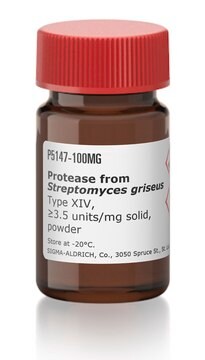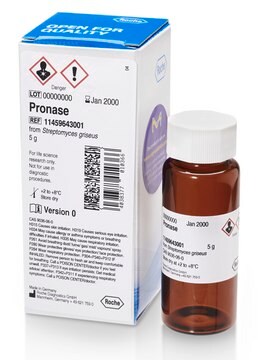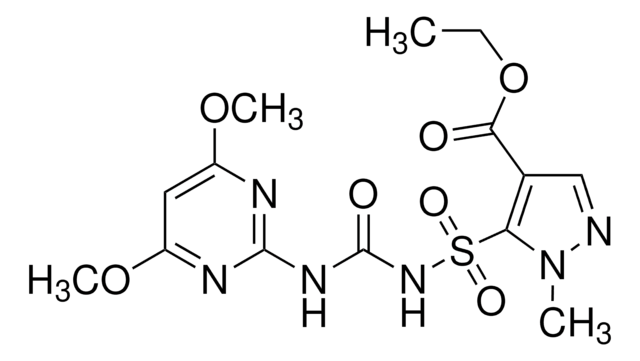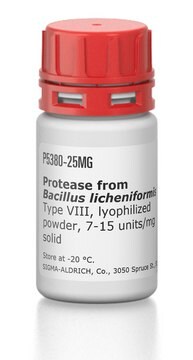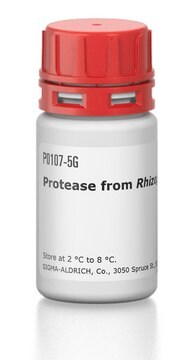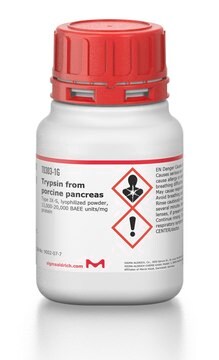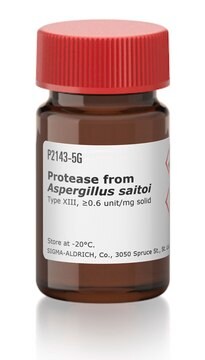53702
Pronase® Protease, Streptomyces griseus
Sinónimos:
Pronase® powder
About This Item
Productos recomendados
descripción
RTECS - UK9595000
Nivel de calidad
Formulario
lyophilized
actividad específica
≥45,000 proteolytic units/g dry wt
fabricante / nombre comercial
Calbiochem®
condiciones de almacenamiento
OK to freeze
desiccated (hygroscopic)
solubilidad
water: 10 mg/mL
Condiciones de envío
ambient
temp. de almacenamiento
2-8°C
Descripción general
Advertencia
Definición de unidad
Forma física
Reconstitución
Otras notas
Información legal
Palabra de señalización
Danger
Frases de peligro
Consejos de prudencia
Clasificaciones de peligro
Eye Irrit. 2 - Resp. Sens. 1 - Skin Irrit. 2 - STOT SE 3
Órganos de actuación
Respiratory system
Código de clase de almacenamiento
11 - Combustible Solids
Clase de riesgo para el agua (WGK)
WGK 2
Certificados de análisis (COA)
Busque Certificados de análisis (COA) introduciendo el número de lote del producto. Los números de lote se encuentran en la etiqueta del producto después de las palabras «Lot» o «Batch»
¿Ya tiene este producto?
Encuentre la documentación para los productos que ha comprado recientemente en la Biblioteca de documentos.
Los clientes también vieron
Nuestro equipo de científicos tiene experiencia en todas las áreas de investigación: Ciencias de la vida, Ciencia de los materiales, Síntesis química, Cromatografía, Analítica y muchas otras.
Póngase en contacto con el Servicio técnico